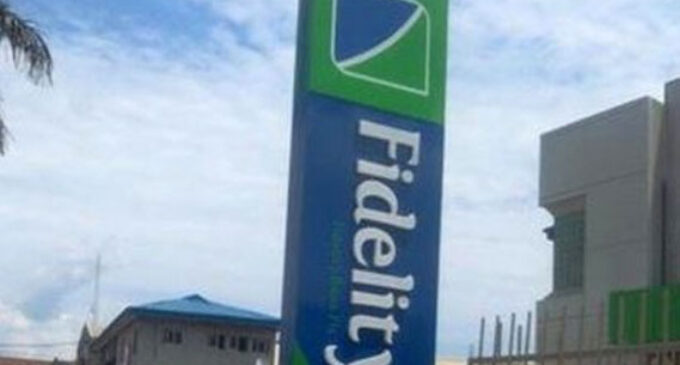Fidelity Bank eyes tier-1 status with impressive H1 2022 results

Fidelity Bank Plc posted a 21.6 percent growth to record N25.1 billion profit in the first half of 2022 and decent accelerations in most key ratios to match up with peers in tier-1 banking.
In its half-year financial statement posted on the Nigerian Stock Exchange (NGX), the bank’s total deposits grew 13.1 percent year-to-date (YTD) to N2.290 trillion from N2.024 trillion in 2021, driven by double-digit growth in low-cost deposits.
The financial results also showed that low-cost deposits increased 26.1 per cent year-to-date to N1.902 trillion, representing 83.1 percent of total deposits from 74.5 percent in 2021FY.
“We are delighted with our H1 2022 performance which showed strong growth across key performance indices,” Nneka Onyeali-Ikpe, Fidelity Bank’s chief executive officer, said.
“With improved efficiency and customer experience around our network, customer transactions have grown considerably as we optimise our balance sheet and build up a large stock of stable low-cost deposits.”

Nneka Onyeali-Ikpe, CEO, Fidelity Bank Plc.
STRONG PERFORMANCE
Gross earnings, on the other hand, increased by 37.9 percent year-on-year to N154.8 billion on account of 52.9 percent growth in interest income to N136.2 billion from N89.1 billion in H1 2021. The increase in interest income was driven by the improved yield on earning assets and 14.9 percent YTD expansion in earnings base to N2,546.5 billion.
Similarly, the net interest margin improved to 6.4 percent from 4.7 percent in 2021 due to improved yields on average earning assets and a decline in average funding cost. Average yields on earning assets increased by 211bps YoY to 11.5 percent, while average funding cost declined by 84bps to 4.0 percent YoY, which resulted in a 50.4 percent growth in net interest income to N75.6 billion.
On the back of the positive H1 2022 performance, the board of Fidelity Bank approved an interim dividend of 10k per share, making it the “first time the bank will pay an interim dividend in its 34-year history”.
FIDELITY BANK EXPANDS TO UK
Last week, Fidelity Bank announced an expansion to the United Kingdom with its proposed purchase of Union Bank UK.
Onyeali-Ikpe had said the 100 percent equity stake in Union Bank UK Plc was in line with the bank’s strategic objectives and business expansion drive.
“Union Bank UK offers a compelling synergy we hope to build on, to create a scalable and more sustaining service franchise that will support the wider ecosystem of our trade businesses and diaspora banking services,” she had said.
ATTAINING A TIER-1 BANK STATUS?
Fidelity Bank is a full-fledged commercial bank operating in Nigeria with over 6.5 million customers serviced across its 250 business offices and digital banking channels.
The bank was recently recognised as the Best SME Bank Nigeria 2022 by the Global Banking & Finance Awards. It has also clinched awards for the “Fastest Growing Bank” and “MSME & Entrepreneurship Financing Bank of the Year” at the 2021 BusinessDay Banks and Other Financial Institutions (BAFI) Awards.
In 2021, Onyeali-Ikpe announced plans to make the bank one of the tier-1 banks by 2025 and achieve a 7.5 percent total market share of deposits in the same year.

Based on its financials, market share and other relevant indices, Fidelity Bank may be on the move as a possible new entrant into the tier-1 banking space in Nigeria.
Tier 1 banks are those with capital adequacy, which is the core measure of a bank’s financial strength. Analysis by Proshare, however, noted that neither asset size, gross, nor net earnings are good enough measures to establish a bank’s industry status. This is because size and profitability are different concepts.
By implication, big assets and share capital may not necessarily be the most profitable business and cannot be the barometer for determining Tier-1 banks.
In its 2021 financial year, the bank achieved a 35.7 percent growth in profit before tax to close at N38.1billion.
Analysis of the results showed that the bank’s gross earnings rose by 21.6 percent to N250.8 billion, driven by a combination of a 60.3 percent growth in non-interest revenue (NIR) and a 15.2 percent increase in interest and similar income.
The growth in NIR reflects the significant increase in customer transactions resulting in 84.9 percent growth in trade income, 48.1 percent in account maintenance charge, and 47.2 percent growth in digital banking income.
In 2021, the bank’s cost of risk came in at 0.5 percent and the non-performing loans (NPL) ratio dropped to 2.9 percent from 3.8 percent in the previous year. Its capital adequacy ratio (CAR) stood at 20.1 percent in 2021 from 18.2 percent in 2020 while the liquidity ratio was 40.4 percent much more above the regulatory threshold of 30 percent.
In its Q1 2022 report, Fidelity Bank said it has commenced the rendition of Basel III returns under the parallel implementation guideline (Basel II & III) as required by regulators.
Basel III is a measure aimed at strengthening the regulation, supervision and risk management of banks.
“We remain well above the minimum requirement. We are committed to achieving the long-term strategic objectives of Fidelity Bank while we look forward to sustaining the current performance trend and delivering another strong set of results for the 2022FY,” the bank said.














There are no comments at the moment, do you want to add one?
Write a comment